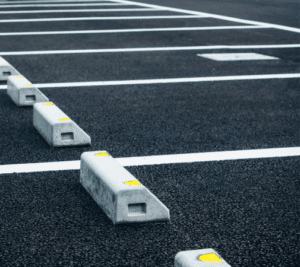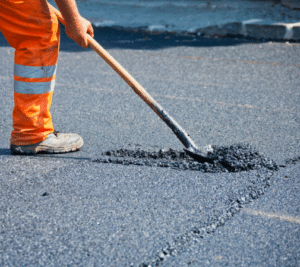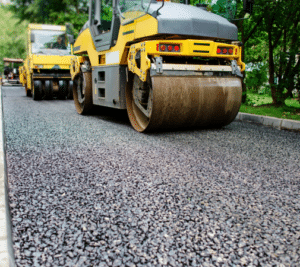Have you ever noticed water pools in certain areas of your driveway after it rains? Or maybe you’ve seen that your car bounces and jolts as you drive over uneven sections. If so, it might be time to consider driveway grading. Driveway grading involves leveling and smoothing your driveway to ensure proper drainage and a smooth driving surface. It not only improves the appearance of your driveway but also helps prevent costly damage and potential safety hazards.
In this article, we will explore the importance of driveway grading and provide step-by-step instructions on how to grade your driveway effectively. Whether you’re a DIY enthusiast or prefer to hire a professional, understanding the basics of driveway grading will help you make informed decisions and ensure a smooth and functional driveway for years to come.
What is Driveway Grading?
Driveway grading refers to leveling or sloping a driveway surface to ensure proper drainage and stability. It involves reshaping the driveway by removing or adding soil to create a smooth and even surface. Good driveway grading is essential to prevent water pooling, erosion, and damage to the driveway. It also helps to improve the overall aesthetics and functionality of the driveway. Homeowners can avoid water damage, potholes, and uneven surfaces by ensuring proper driveway grading.
Types of Driveways
There are a few different types of driveways that require different types of grading. Gravel driveways require the most attention when grading, as this type of driveway must be leveled and packed regularly to remain even and functional. Concrete and asphalt driveways typically need less frequent maintenance, but they must still be adequately graded to prevent water pooling or other damage.
What Is Needed for Proper Grading?
To ensure that your driveway is appropriately graded, there are a few essential items that you will need. These include a shovel, rake, and any other hand tools necessary for manual grading; a motorized grader or backhoe for machine grading; and soil or gravel to fill in low spots or depressions in the driveway surface. Additionally, it is important to check the drainage of your driveway before and after grading, as this will help to ensure that water is properly directed away from the driveway and not pooling on or around it.
Step-by-Step Guide to Driveway Grading
Driveway grading is an integral part of proper driveway maintenance and can help ensure your driveway stays in good condition for years. Here is a step-by-step guide to grading a driveway that can help you get started on the process:
1. Measure and mark the area: Begin by measuring the area of your driveway and marking where the edges will be. This is important for ensuring a uniform shape and size.
2. Level out the area: Using a shovel, rake, or other tools, level out the soil in the marked area so it is even across the surface.
3. Create slopes: Slope the edges of your driveway away from any buildings or structures to ensure proper drainage.
4. Fill in low spots and level out high areas: Use soil to fill in any low spots in the driveway, and use a rake or shovel to level out any high spots.
5. Compact the soil: Once you have finished grading your driveway, compact the soil with a tamper or plate compactor to ensure it stays flat over time.
Proper drainage is key to maintaining a driveway, which requires regular grading and sloping. Installing a drainage system can help direct water away from the driveway and prevent standing water, which can cause damage and erosion. This involves digging trenches around the perimeter of the driveway, installing drain pipes, and covering them with gravel. These steps should be followed for the drainage system to work correctly.
Maintenance
Regular maintenance is essential for ensuring that your driveway remains in good condition. This includes regularly checking the surface for cracks, holes, and other signs of wear and tear. Repairing these issues as soon as they are noticed can help to prevent further damage and costly repairs in the future. In addition, it is important to check the surface of your driveway every few months to ensure that the grading is still even and appropriate. If not, you may need to add or remove soil to achieve a level surface.
Regular maintenance also includes keeping debris off the driveway, such as leaves and branches. It is important to sweep or rake the surface periodically to remove debris that could inhibit water drainage or lead to potholes. Additionally, it is important to check around the edges of your driveway for any signs of erosion and fill these spots with soil or gravel if necessary. This will help to ensure that the edges remain solid and stable.
In conclusion, investing in driveway grading is not just about improving the aesthetics of your property but also about ensuring the longevity and functionality of your driveway. You are making an innovative and practical investment by addressing drainage issues and preventing future damage. So, keep your driveway from becoming a source of frustration and headaches. Take action now and enjoy a smooth and beautiful driveway for years!
If you’re looking to upgrade your driveway, look no further than Saguaro Asphalt! With our experienced professionals and top-of-the-line equipment, we can grade and repair your driveway quickly and efficiently. Contact us today for a free estimate, and let us help you get the perfect driveway of your dreams!



